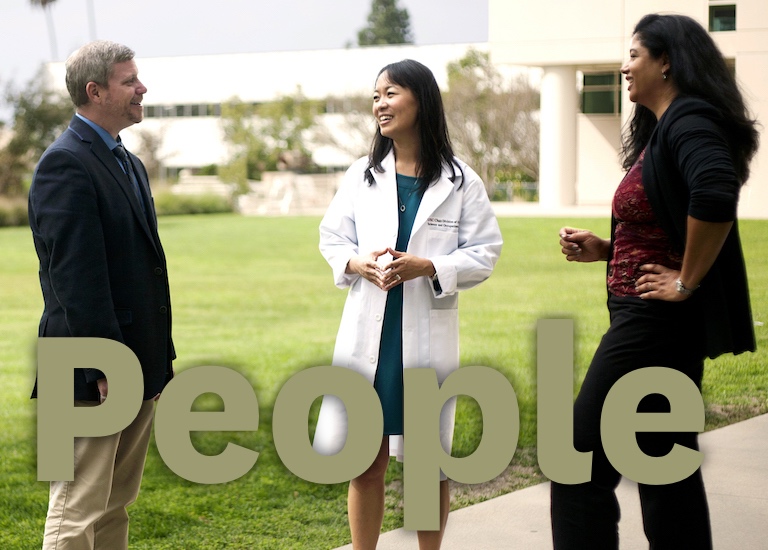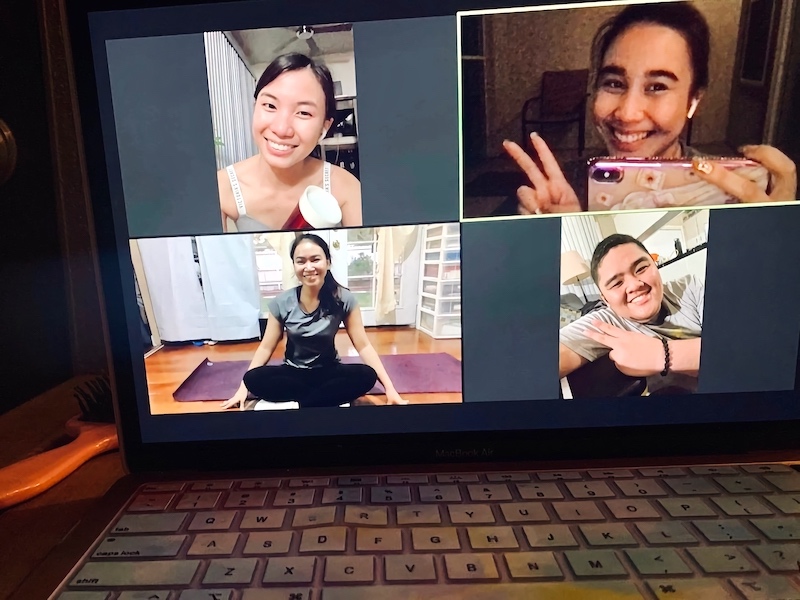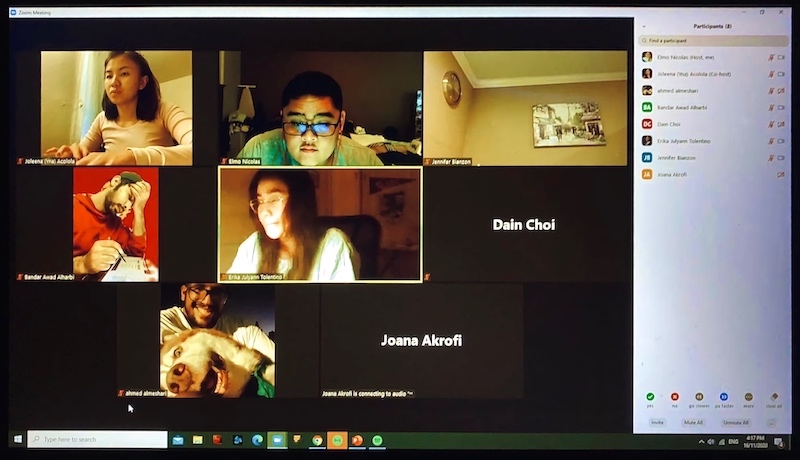Student Blog
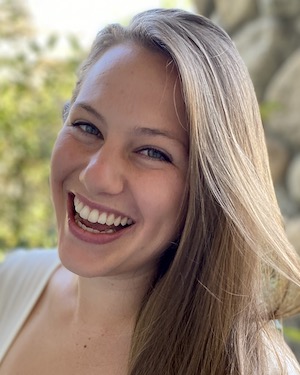
Overcoming Rejection and Feelings of Inadequecy ⟩
December 9, 2020, by Savi
Classes Getting Involved Life Hacks
As my last semester of classes has come to an end, I had anticipated feeling relieved. I now sit here, having passed all of the courses I need to graduate from this Master’s program, feeling immensely overwhelmed and discouraged. Up until this moment, everything had been mapped out for me. Each class that I would take and when I would take them were pre-determined. I knew that I just had to work hard and do my best in order to be successful academically.
I am currently studying for the COMPS (comprehensive exam) that I will be taking on December 15th with the rest of my graduating class and I am worrying about my future. This future is not pre-determined and it is scary, especially amidst a global pandemic. It is up to me to pave the way.
During this hectic time, I have also decided to pursue my OTD. After going through the interview process for the USC Chan Division residencies and being informed that I did not receive one, I felt extremely discouraged. I took this rejection as an indication that I was not good enough to get the opportunities I had been aiming for. I became anxious over the fact that I would have to find my own residency, especially because I was worried that my lack of experience in my field of choice would prevent me not only from getting a residency but also a fieldwork II experience.
This stress and feeling of inadequacy was something that was difficult to overcome. After sitting back and reflecting, I came to realize that I was letting one rejection skew my view of my self-worth and capabilities . . . just one rejection held that much power over me!
It wasn’t until I realized that if I didn’t believe in myself then who would!? I decided that if I didn’t try my best to go after the positions and experiences I feel like I deserve and want then I would regret it tremendously. I couldn’t let one rejection deplete my confidence and I knew that even if there were more rejections to come I would learn from them and keep moving forward.
I spent the coming weeks being polite and persistent. I began communicating with people who could help me develop the residency position of my dreams. Putting all the pieces together was tricky, and it took a lot of persistence to progress things further. Advocating for myself and my worth was key in progressing things forward, as well as acknowledging the work and effort the people communicating with me were putting in.
Your future is what you make of it. Be persistent, confident, understanding, and kind. Know that the person you are talking to will never know the mark you can make if you don’t advocate for yourself and your worth. Don’t let rejection take a toll on you. Sometimes putting in the extra work to make things happen really pays off! Advocate for yourself and believe in yourself because no one can do it better than you.
⋯
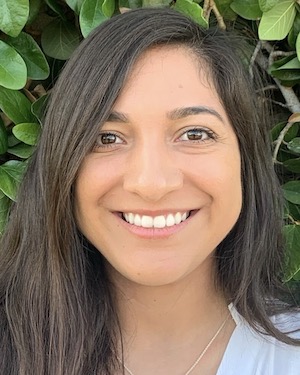
My Work as a Student Ambassador Part 1 ⟩
December 3, 2020, by Liz
Ever since I attended my first information session for USC’s OT program being a student ambassador seemed so cool! My interest in applying for a position was largely influenced by how great my experience was with my assigned student ambassador, Melissa. I appreciated how approachable she was and how willing she was to answer any questions I had. She responded to my emails very promptly and overall made me feel very supported as I waited to begin my first summer session.
The opportunity to apply for the position presented itself my first year during the spring semester. One of my favorite professors of all time, Dr. Celso Delgado Jr., told me about the position and encouraged me to apply. So, I went for it! It was definitely nerve wrecking because many of my peers were also applying, all whom I thought were also great candidates. After a bit of waiting, I was lucky enough to find out I was one of the students who had been selected. Woo!
Being a student worker through this position has been challenging, but manageable. This fall I worked 10 hours a week, but luckily because of everything being remote I was able to complete a few of my hours over the weekend and later on in the day. This position has also challenged me to stay organized. I have had to make sure to prioritize my school work, get work done for my fellowship, and also balance my personal life on top of working on my student ambassador duties. It’s been difficult at times, but I am grateful to have a wonderful team to lean on when I need help.
Every member of our team takes the lead on different projects, but we all work together as one to make sure our goals are met. Here’s a little bit of what I’ve done so far:
1. Write blogs!
Part of what I do is share my experiences as an OT student by writing blog posts. Our entire team does it! This is an awesome way for people who are interested in our program to learn about different people’s experiences and to connect with those whom they feel may have experienced similar challenges (e.g., being waitlisted, first-gen students).
2. Attend/assist during information sessions
You may have seen some of us if you’ve attended an information session before. Part of what I do is attend these sessions to answer questions as they relate to the student experience for students who are interested in applying for our program. It’s always so fun getting to know all of you!
3. Connect with current and prospective students
You may have also seen us on our website — we’re here for you! I stay in touch with current students to answer any questions they may have about certain classes/electives, how to best prepare for exams for classes I’ve taken before, or simply to listen and support during stressful times during the semester. I also stay in touch with prospective students to support them as well. My goal is to make prospective students feel welcome and provide guidance as they apply for our program!
4. Get OT’s name out there at grad fairs
Another thing that I do is attend different grad school fairs. At these fairs I present on our program and get OT’s name out there. Sometimes students who are already interested in OT attend, but students who have no idea what OT is will also come to our booth to hear more about it. My goal here is to convert the whole world into future occupational therapists! Just kidding, or am I? During these presentations I also share about my personal journey to finding OT. I answer different questions students have about occupational therapy/occupational science, about our program, about my experience as a first-generation, underrepresented student, etc. You name it, and I will answer it!
5. Support admissions
As you may know, the deadline to apply to our Entry-Level Professional Master’s Program just recently passed. We get hundreds of applicants, which means the admissions team has a lot of applications to read through as they decide who will be admitted. So, something I’ve done this year is help make that process a little easier for them. I’ve helped put together student applicant files, so that when admissions goes through to read everyone’s application everything can be ready and organized for them.
6. Bring new ideas
This year I’ve been able to add my own twist to presentations. Continuing to diversify our program is something that I am really passionate about. With that said, I began brainstorming on how this could continue to be done in new ways. An issue that I identified that many first-generation, underrepresented students face is that they simply don’t know about OT at all. For example, they may not have family members that work as/with OTs and they may not have access to or have ever received services from an OT.
I decided that I wanted to find a way to reach out to younger students to expose them to OT and to also serve as an example of someone who has been able to make it to grad school. When I was a younger student I definitely didn’t see grad school in my future for various reasons. So, I decided to collaborate with the AVID program at different LAUSD schools. If you’ve never heard of AVID, it is a program that supports first-generation students, many of whom are low-income, during their journey to obtaining a higher education. As a previous AVID student myself, I thought this would be a great way to reach out to younger students! I am happy that I have been able to bring new ideas to the team as we continue to work towards diversifying our program.
I hope this has given you all a brief glimpse into what I have done so far as a student ambassador. I decided to call this part 1 because the year is not over yet — stay tuned for part 2! As always, if there’s any questions you may have about my position as a student ambassador or anything at all please feel free to send me an email. Fight on and happy holidays to you all!
⋯
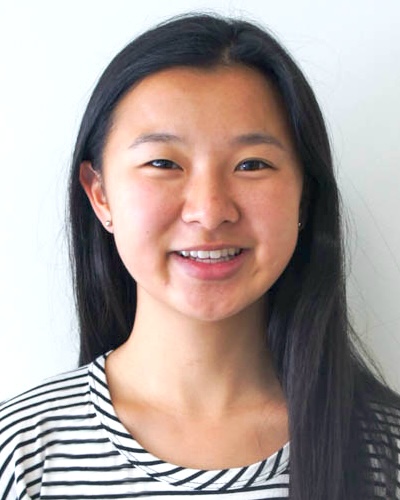
What I Miss on Campus ⟩
December 2, 2020, by Bethany
Now that I’m back home, I find myself often reminiscing about my home away from home. I spent three years on the University Park Campus (UPC) and a fourth year commuting between UPC and the Health Science Campus (HSC), and now I miss both of them. Some places, though, bring back more memories than others. Here are a few of the places I miss going to:
Tommy’s Place
Hidden in the basement of the Tutor Campus Center on UPC, this chill little hideaway is where the pool tables are. I played a few games with friends, and although I’m not that great of a player, I still had a lot of fun. Tommy’s Place is also where the flute section members who had stayed home would gather on away game days to watch the game together.
Adult Rehab Lab
Adult Physical Rehabilitation was one of my first classes in the Master’s Program. Inside the Rehab Lab, I had some of the most physically challenging OT experiences. We worked with standardized patients to help us learn how to best position ourselves to get our clients up and walking after a hip replacement. We also made hand splints. This past semester, I got to enjoy seeing Instagram stories of my friends who are in Adult Physical Rehab go to the lab in masks and face shields to learn how to do transfers to wheelchairs or how to put on a gait belt.
Cromwell Field
From freshman to senior year, I spent so much of my fall semester on Cromwell Field practicing shows. After a long day of classes, I’d run to practice, pull out my piccolo, and play and de-stress. I may have given myself some minor hearing damage (Note to self: use earplugs with a piccolo!), but it was worth it. There’s nothing like saluting the real, live Traveler with “Conquest.” Or running through one last set and realizing Alan Silvestri is there. At your 7am practice. Conducting the finale of the Marvel show. The 2019 Flute Seniors also made a pyramid during band camp. Unforgettable memories.
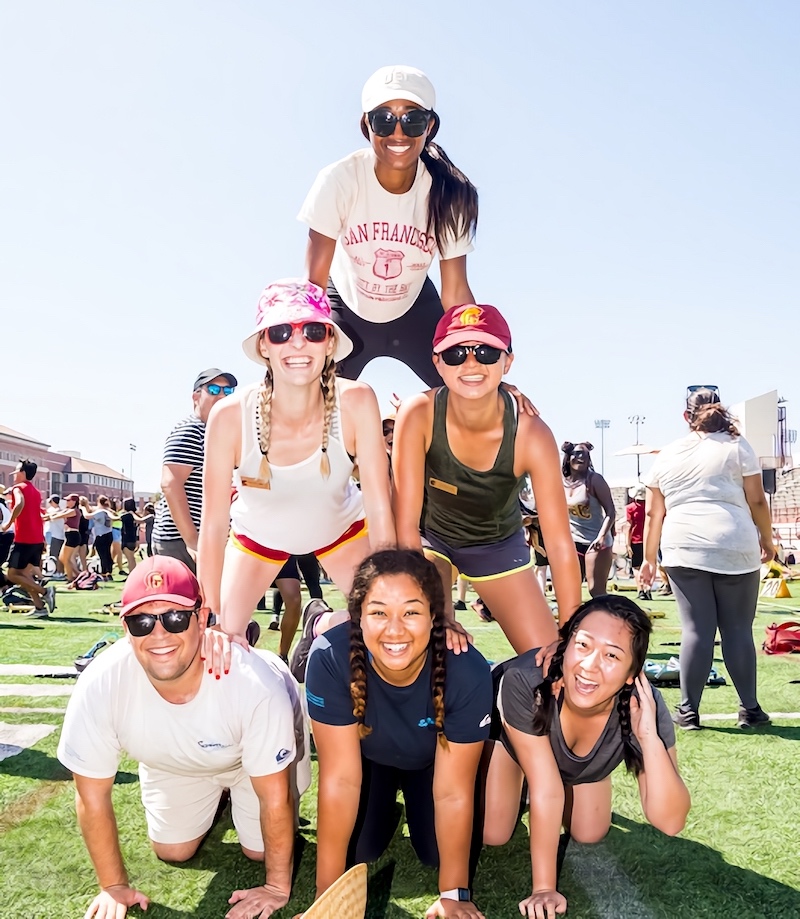
Cromwell Field | Photo credit: Ben Chua
Bookstore at HSC
It’s a small little store, tucked away in the corner by the food court on the Health Science Campus. But the best part about it: they have OT gear! Get hats, license plate frames, mugs, the whole shebang representing the Division and OT. Sure, the UPC Bookstore may have a Sprinkles Cupcake ATM, but it’s at the HSC Bookstore that you can buy the best gear (Though, I have to admit, this statement is slightly biased).
The Great Lawn
Located in the USC Village, the Great Lawn is conveniently right behind Trader Joe’s. On those nice spring days that aren’t too hot or too cold, where you can see the blue sky above the trees, you’ll find many people sitting out on the lawn to play spike ball or just talk. I have enjoyed a great many picnics out on the Great Lawn, including one where a friendly dog came by and made us throw a frisbee. Multiple times. My own dog preferers belly rubs and napping to catching frisbees, so it was a nice change of pace.
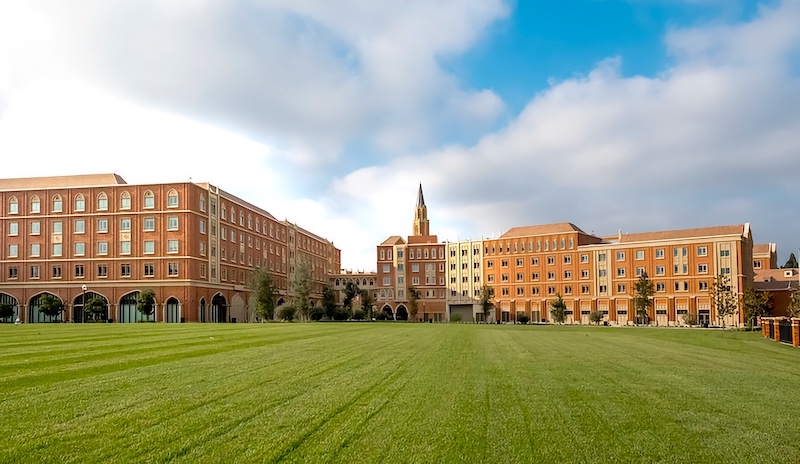
The Great Lawn | Photo credit: USC Flickr
Keck Cafeteria
During lunch, my friend and I would always head over to the cafeteria. They make some amazing, decently-priced quesadillas and wraps. So we would often head over on days where I had not packed a lunch. Another friend of mine took classes nearby and would occasionally meet us there for lunch to talk about life and classes. The cafeteria was a great place to take a break and enjoy some good eats, as well!
Mt. McCarthy
There is a well-known quad right outside of Leavey Library called McCarthy Quad, the center of many school events and our weekly farmer’s market. And right next to this quad, is a hill: the highest point of elevation on the University Park Campus. Many students study, hammock, or both in the shade of the trees. It’s a great spot to get together for lunch with friends, and it’s right next to the weekly farmer’s market.
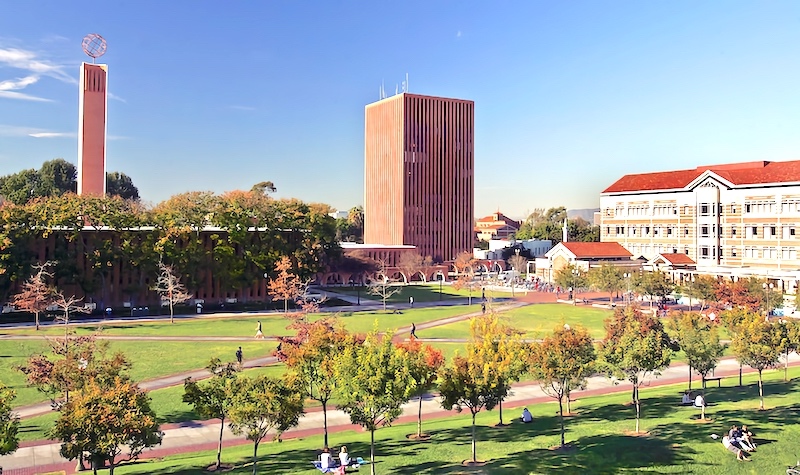
McCarthy Quad | Photo credit: USC Flickr
Coming back to all of these memories of campus is bittersweet. I miss being on campus. I miss being in each of these places. I miss spending time with people I care about. But for now, it’s enough to reminisce and meet up on Zoom. And hopefully, once things open back up, then, reader, you’ll have some ideas on how to make new memories.
⋯
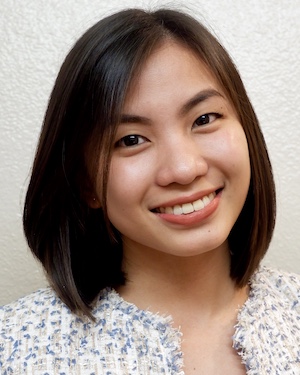
All About That Quarantine Life (Experiences + Study tips) ⟩
November 27, 2020, by Yna
Studying in quarantine is something that none of us has ever done before, so for those of you who are feeling lost, well, you are not alone! As I have mentioned in my previous blog, this has brought me feelings of anxiety too as I was about to take my final exams (which all went pretty well by the way, yay!). As I have spent a whole semester of figuring out how to navigate this new setup (all while trying my best to look like I have it all together . . . lol), I have picked up a few hacks that some of you may find beneficial.
Develop healthy habits and routines
One of the benefits that many of us have found from doing remote learning is getting to skip the extra steps of having to prepare for and travel to school. With classes being held online, you really only have to worry about being presentable from the chest up (because they’re never going to find out if you’re still in your jammies anyway, right?) and traveling from your bed to your study desk right beside it. I am not even going to lie, I enjoyed being able to just roll out of bed and go straight to class whenever I don’t feel like getting up early. While this might have given me extra hours of precious sleep, in the long run, I realized it became an unhealthy habit I had adopted. I started from waking up at least an hour before class, to 30 minutes prior, to 5 minutes before, and there was even a time that I was late because I overslept (a huge shout out to my dear classmates who noticed I was missing and immediately gave me a wakeup call)! I mean, yeah, everyone has those down days when you’re just feeling extra tired and in need of more sleep; but I realized I had overused this benefit to the point that I had been skipping breakfast altogether for consecutive days. Over time, I found my everyday routine drastically changing — eating habits were disrupted and irregular sleeping patterns have developed — ultimately affecting my study habits because the lack of routine often left me feeling all over the place and unable to focus. And so, I really would suggest waking up a little bit earlier before class to give you some time to eat a good breakfast, savor your cup of coffee, take a shower, maybe do some reading on the materials, and really, to just get your mind oriented and ready for class. And honestly, who doesn’t love just getting a moment to yourself at the start of the day? Besides, how you begin your day kind of sets the stage of how the rest of your day is going to look like, so try your best not to start it in such a rush.
Set up your space neatly
Not only do you need to set up your mind, you also need to set up your space all ready for work. A cluttered environment = a cluttered mind! I ended up getting a new desk and chair that’s ergonomically correct for my workstation to facilitate proper posture, but this really isn’t a necessity. There are many ways to adapt and work with what you currently have (using pillows for your back, step stool for feet support, etc.) — we as OTs know all about this! I’ve had to experiment a couple times playing with different positioning of my desk that works best for me in relation to lighting, room temperature, and appearance on Zoom background (making sure the space behind me has low traffic to avoid bloopers during class, LOL).
Take breaks
I know, you’re probably already tired of hearing this; but truth be told, this new setup has got us sitting in front of our computers for most of the day — without us even realizing it! I admit, I, too, am a victim of this. The advent of technology has advanced the speed of information processing by a ton, that it’s getting harder and harder for us, humans, to keep up. Nevertheless, we still try our best to answer emails as soon as they get to our inboxes, and accomplish any other task that needs to be done “just to get it out of the way,” am I right? The to-do list goes on and the next thing you know, you had already been working for hours straight. And when you finally decide to take a minute to pause, that’s when you’re going to feel them all at once — strained eyes, pain from the neck all the way to your lower back, hungry stomach, tired arms and fingers from hours of typing with poor posture. This is why I really appreciate our professors who sees to it that they allot some time during the class to give us multiple breaks as our chance to stretch, hydrate, go to the restroom, or grab something to eat (to be honest, sometimes I even take a nap — just make sure you wake up in time!). You can also set up your own physical activity reminders at different points throughout the day using your smartphone or watch.
Get physical!
In relation to my previous tip, I found it helpful to incorporate exercise in my weekly routine as my form of physical activity to battle this increasingly sedentary lifestyle. Of course, it’s not like I just woke up one day deciding to start working out and then consistently did it. New routines take time to develop, so don’t be too hard on yourself! You really don’t want this to be another source of pressure for you aside from other responsibilities that you already have. What definitely helped me get motivated and stick to the schedule was doing it with my friends, who also happened to be in the same program as mine — leaving us with pretty much similar class schedules and free time to exercise.
Study in groups
Since we’ve already set up workout sessions, might as well extend it to study sessions with friends too! I know, you’re practically already in Zoom most of the day for classes so you might ask: why choose to add more hours on the screen? Well, for me, seeing other people (albeit virtually) so focused on studying gives me the boost to do my own studying too. Basically, one of us sets up a meeting and keeps it open for several hours where people are free to come and go. This gives everyone a little bit of flexibility since we all have other responsibilities in our own busy lives. As a bonus, if we do a great job focusing for a couple hours, we reward ourselves with a few minutes to chill and casually talk with each other (someone’s gotta be responsible in making sure we go back to studying, though!)
Some of the students in the Post-Professional Master’s program studying for our final exams. Credits to Elmo for the photo, and also for setting up the Zoom meetings for the class!
In addition to these, you can also check out Savi’s blog and find some tips on staying organized! I hope you find these useful for your own studying, especially those who will be taking their comprehensive exams next month. You got this! Best of luck to you all, and Fight On!
⋯
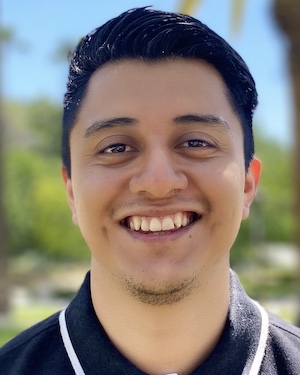
Last Step, But it Comes with a Price (The Cost of Getting Your OT License) ⟩
November 23, 2020, by Daniel
This is the time when many of you are finishing your Fall semester, and for class of 2021 this is the end of the didactic part of the Master’s program for you! Congratulations! Time flies by right? Once you are done with the COMPS Exam and get some well-deserved rest during the holidays, you will be gone for 8 months doing level-2 fieldwork. Perhaps you may feel like it is too early to start thinking about the NBCOT or OT License application process, but trust me, that will come sooner that you expect it. I wanted to take this time, while it is still fresh on my mind, to share with you the costs I accumulated the last couple of months in the process of getting my OT license. Last week I received an email stating that my California OT License was approved and I am officially an OTR/L!! But first, I had to pay the final license fee.
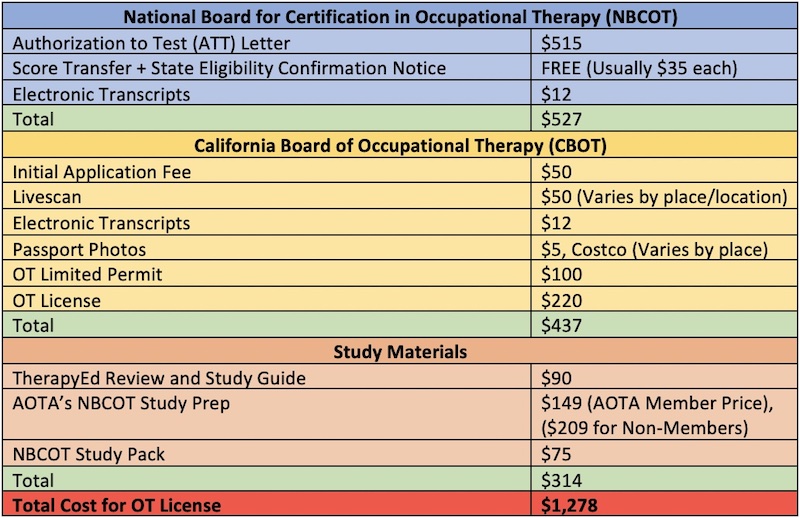
Breakdown of my expenses from August to November 2020
So . . . $1,278, that was the total spent to get my OT license. I was not happy about it either. Yes, that is a lot of money and for many students it may not be easy to get that amount of money. This is the reason why I think it’s important to start thinking about it now, even if it’s still a year away. You want to make sure you are planning ahead and if you can set aside some money for when this time comes. I understand that my experience may be different from other students, and keep in mind that these were my costs for 2020 in the state of California. If you are applying for your OT limited permit and/or license, the process and costs may look different. Lastly, the process doesn’t really change but make sure you are checking all the updated requirements.
I remember when I was in the Master’s program I knew I would have to pay for NBCOT exam, OT License, etc. but it wasn’t until I did my research that I realized just how expensive it is. And how does one “save money” while being a full time student, being at fieldwork, and perhaps not having an consistent income? Unfortunately, there isn’t one specific answer for that. However, there are a few things I would recommend as you prepare for the costs of getting your OT license.
- Apply apply apply for scholarships! Last year I applied to the California Foundation of Occupational Therapy (CFOT) Scholarship and was selected, which is one of the ways I had funds for NBCOT/OT license expenses. If you haven’t already, please check our USC Chan Scholarship Page which includes USC and non-USC scholarship opportunities throughout the year.
- Select your study materials wisely and talk to former OT students about their experience preparing for the NBCOT exam. You may not have to get every single study material out there. I made that mistake this past year because I panicked and didn’t inform myself prior to buying study materials. As I began studying, I realized there are many free resources to study for the NBCOT. Please see previous blog that talks more about study materials I used, including free resources.
- Consider the timeline from completing your last level-2 fieldwork to when you will need your OT limited permit and/or license. The reason I bring this up is because you may be able to reduce your costs if you don’t need your OT limited permit for example. For OTD students in the clinical track, we were required to apply for the OT limited permit in order to provide any type of client care. For other OTD tracks or if you are front-loading all your OTD courses, make sure you are in communication with Dr. Bream to understand your timeline and expectations for getting your OT limited permit and/or license. Many of my classmates that decided not to do the OTD, only had to pay for the OT license since they waited to apply for jobs until they passed the NBCOT and their license was approved.
- For physical study materials (i.e., TherapyEd book, Occupational Therapy Examination Review Guide) check your class Facebook page, Facebook NBCOT study groups, and with former OT students as they may be willing to sell you the study books for cheaper. Also, don’t forget to use your study materials from the program (i.e., Pedretti book)!
- Start setting money aside now, if possible. If you find yourself working during fieldwork, this may be something worth considering. I was fortunate to work as OTD Student Ambassador during the summer, helping ease the financial burden of all the expenses.
- Get creative! Start a fundraiser! You may able to raise part of the money by selling food, baked goods, etc.
“Ugh, I have to pay more money to get my license?” Those were my exact words because it is frustrating every time you learn about additional expenses. Perhaps, the tips I provided are helpful for some you, but I think the most important part is that you are aware of those final costs that are going to come no matter what. Haven’t some sense of direction can help you plan ahead the best way that you can. Remember this will be the final step in fulfilling that dream of becoming an OT! You have done the work, and it will all be worth it in the end. If at any point you feel stuck or find yourself in a situation where you cannot afford the costs please reach out to me (.(JavaScript must be enabled to view this email address)). Later in the academic year, I will share with you all a blog post specifically to explain the NBCOT and CBOT application process, stay tuned!
⋯





